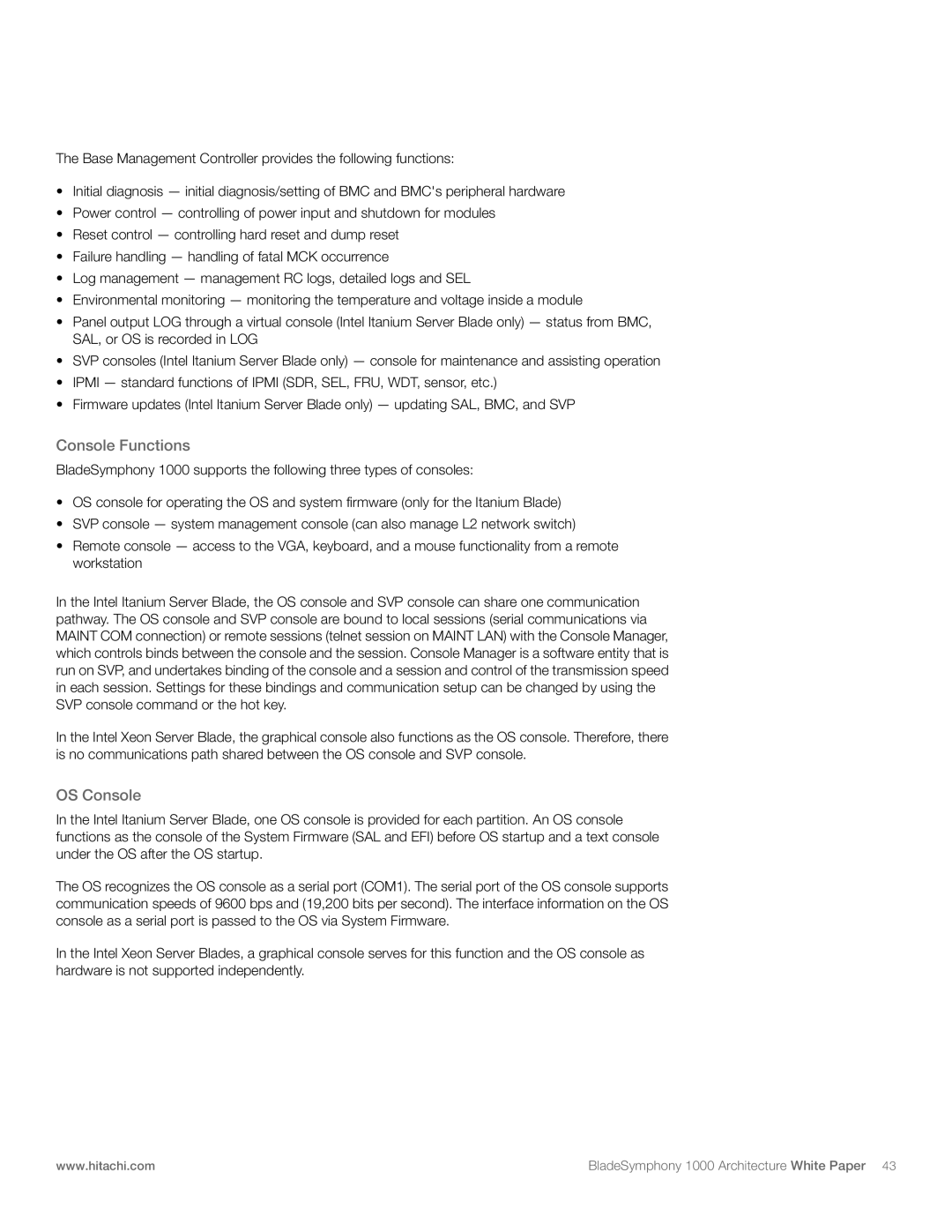The Base Management Controller provides the following functions:
•Initial diagnosis — initial diagnosis/setting of BMC and BMC's peripheral hardware
•Power control — controlling of power input and shutdown for modules
•Reset control — controlling hard reset and dump reset
•Failure handling — handling of fatal MCK occurrence
•Log management — management RC logs, detailed logs and SEL
•Environmental monitoring — monitoring the temperature and voltage inside a module
•Panel output LOG through a virtual console (Intel Itanium Server Blade only) — status from BMC, SAL, or OS is recorded in LOG
•SVP consoles (Intel Itanium Server Blade only) — console for maintenance and assisting operation
•IPMI — standard functions of IPMI (SDR, SEL, FRU, WDT, sensor, etc.)
•Firmware updates (Intel Itanium Server Blade only) — updating SAL, BMC, and SVP
Console Functions
BladeSymphony 1000 supports the following three types of consoles:
•OS console for operating the OS and system firmware (only for the Itanium Blade)
•SVP console — system management console (can also manage L2 network switch)
•Remote console — access to the VGA, keyboard, and a mouse functionality from a remote workstation
In the Intel Itanium Server Blade, the OS console and SVP console can share one communication pathway. The OS console and SVP console are bound to local sessions (serial communications via MAINT COM connection) or remote sessions (telnet session on MAINT LAN) with the Console Manager, which controls binds between the console and the session. Console Manager is a software entity that is run on SVP, and undertakes binding of the console and a session and control of the transmission speed in each session. Settings for these bindings and communication setup can be changed by using the SVP console command or the hot key.
In the Intel Xeon Server Blade, the graphical console also functions as the OS console. Therefore, there is no communications path shared between the OS console and SVP console.
OS Console
In the Intel Itanium Server Blade, one OS console is provided for each partition. An OS console functions as the console of the System Firmware (SAL and EFI) before OS startup and a text console under the OS after the OS startup.
The OS recognizes the OS console as a serial port (COM1). The serial port of the OS console supports communication speeds of 9600 bps and (19,200 bits per second). The interface information on the OS console as a serial port is passed to the OS via System Firmware.
In the Intel Xeon Server Blades, a graphical console serves for this function and the OS console as hardware is not supported independently.
www.hitachi.com | BladeSymphony 1000 Architecture White Paper 43 |
